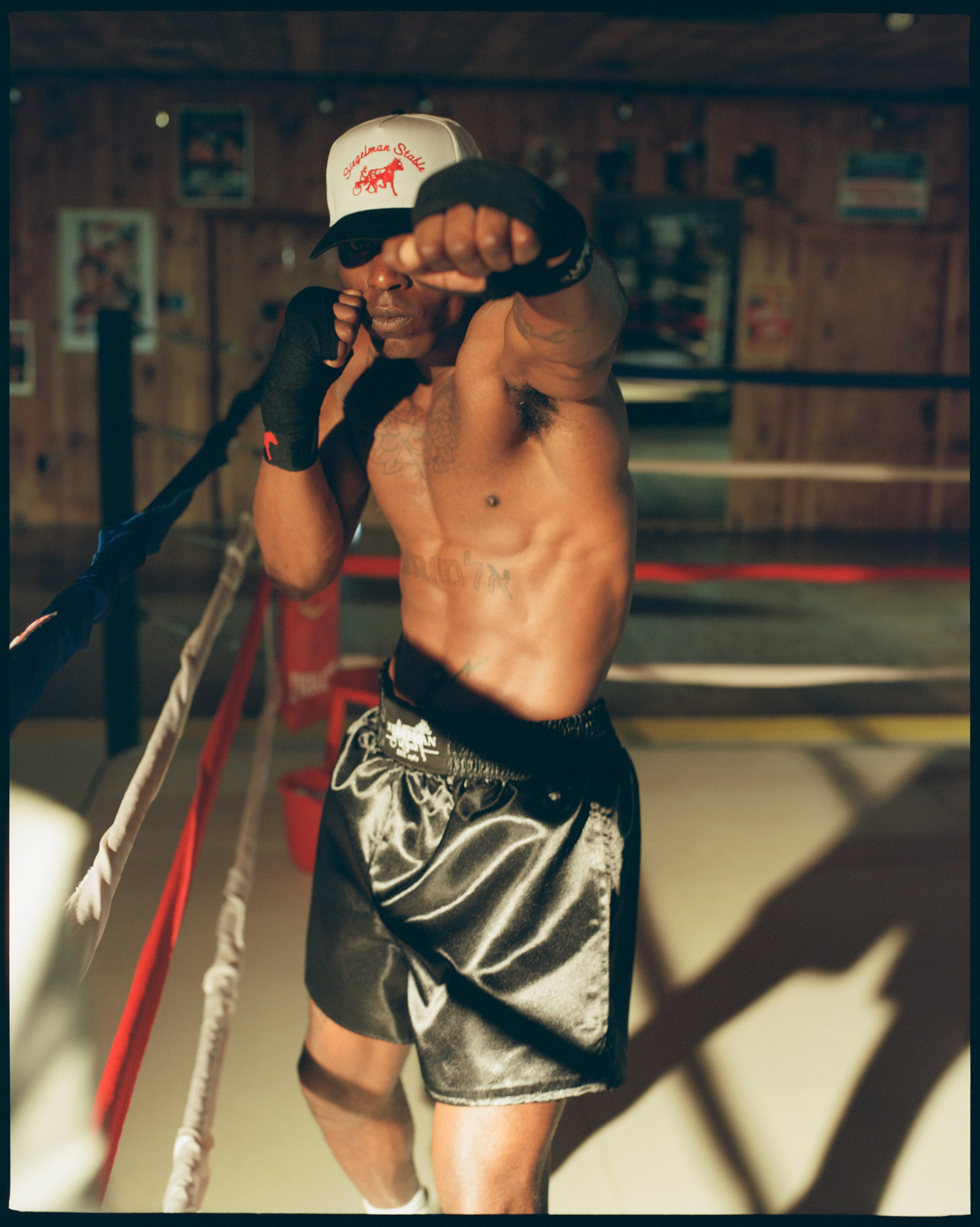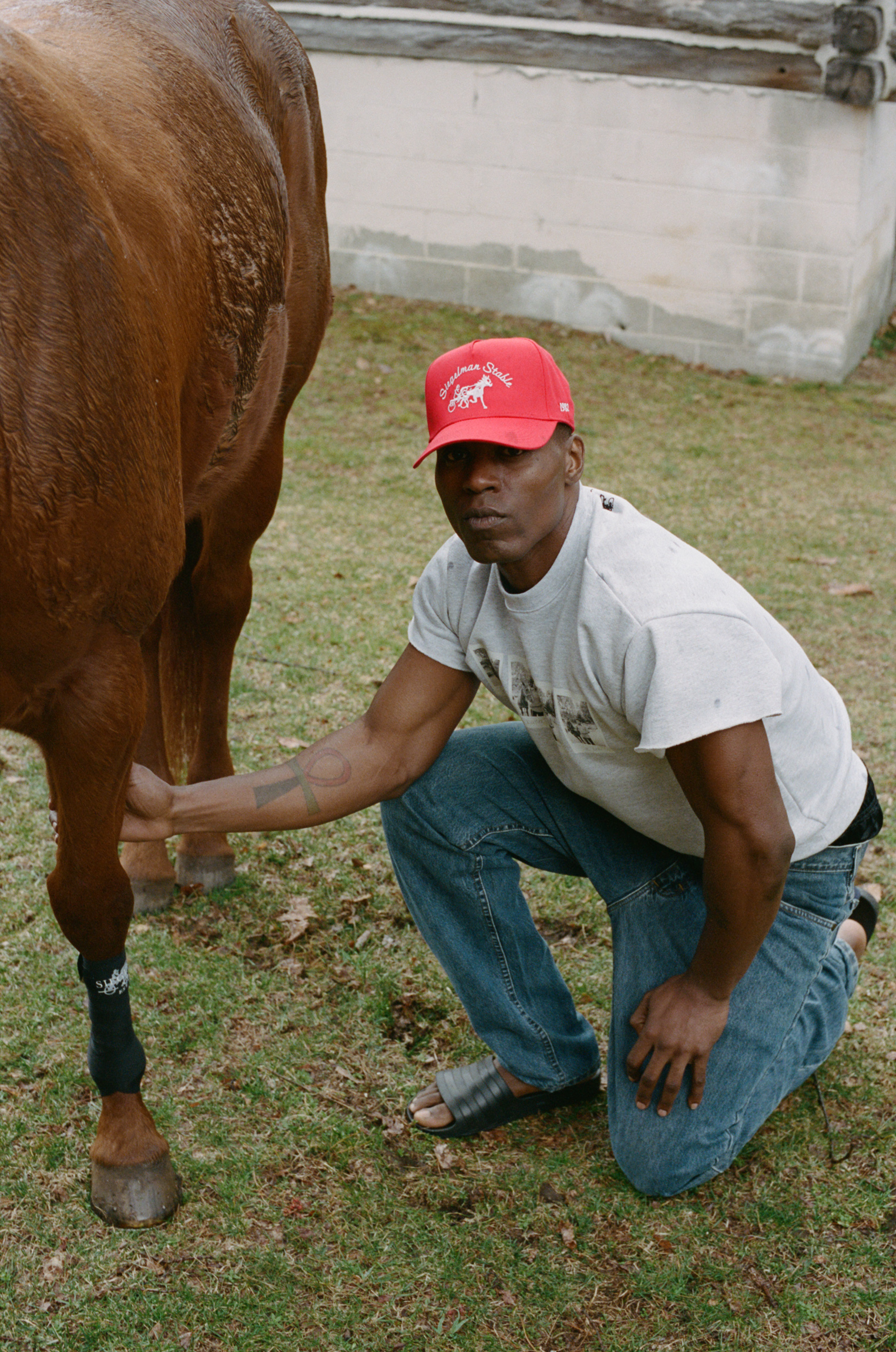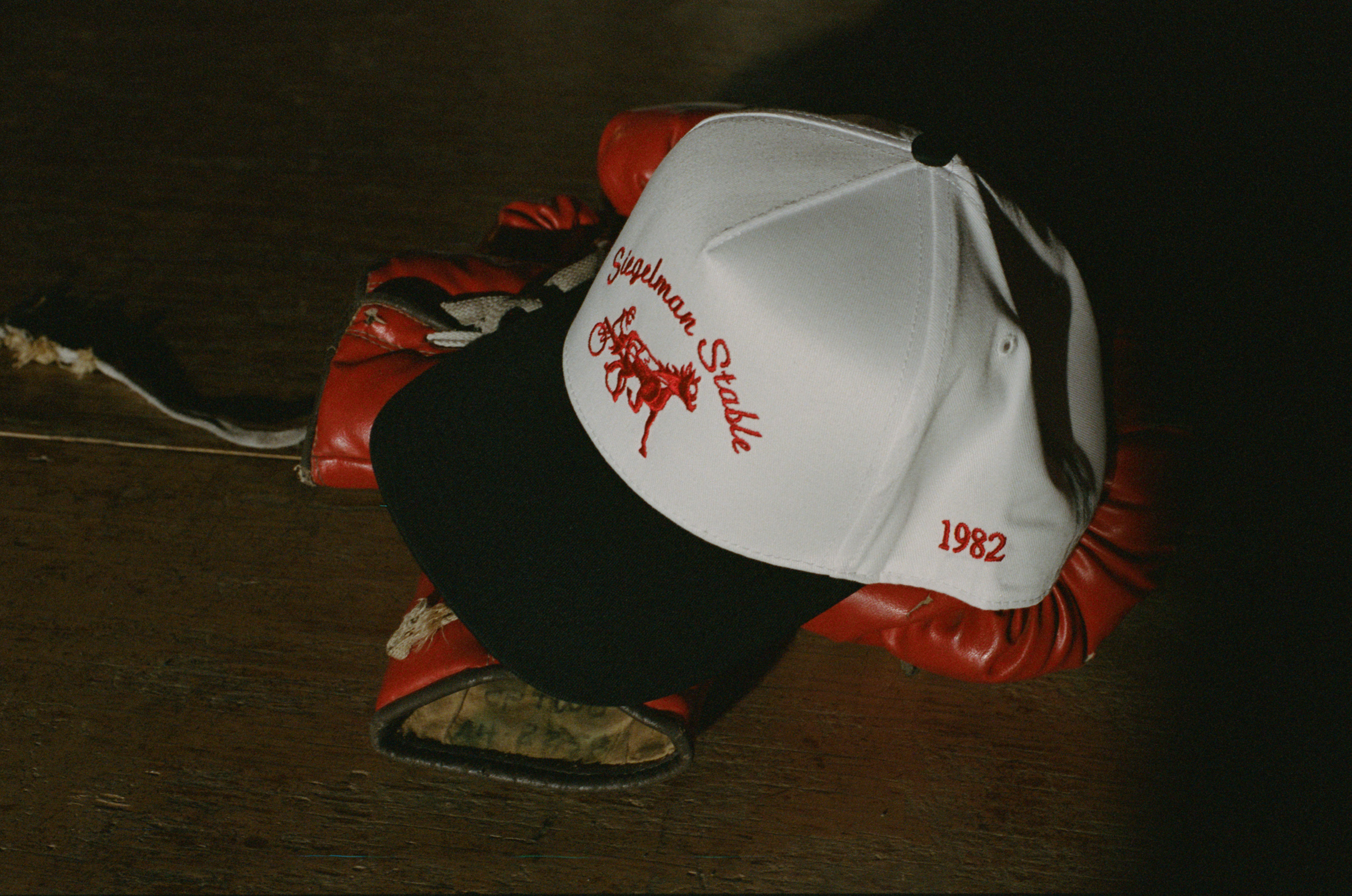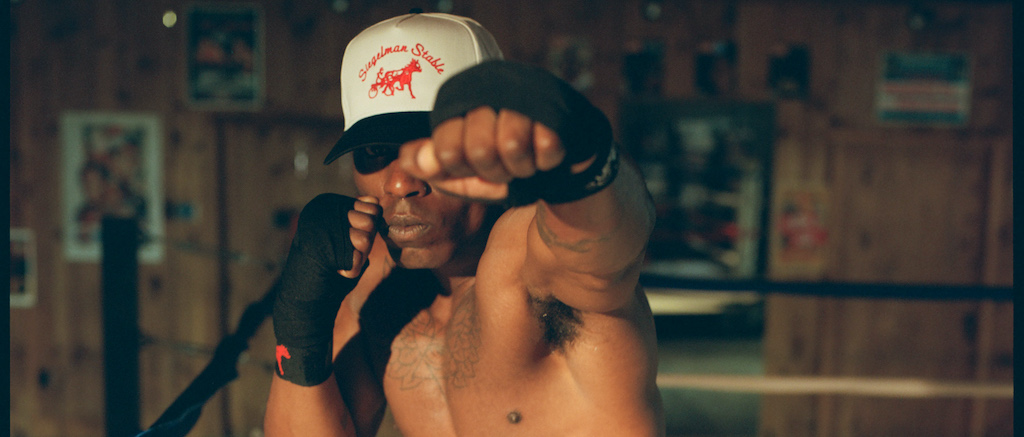Everyone has a Muhammad Ali story, even if just a memory of witnessing him from afar or an awareness of his perpetual influence.
Louise Argianas had three. Before recently retiring, she headed up clearance and licensing for ABC Sports/ESPN for forty years. Ali visited the ABC Sports office in 1991, putting on a magic show for employees’ children, including Argianas’ oldest son, Jesse. Ali returned nearly ten years later, pulling new magic tricks from up his sleeve, and politely asked to use Argianas’ back as a surface to sign autographs — “he had his entourage trying to pull him away, but he just wanted to be with the people.” She attended his 70th birthday bash at the MGM Grand in Las Vegas in 2012, four years before his death at 74 from Parksinson’s.
“Ali was one of the most central sports personalities of my career. If you’ve seen any documentaries or movies on Ali, I probably had a hand in them because they had to come to me for [archival] footage,” Argianas says. She pauses, then adds, “But meeting him three times? That just doesn’t happen.”
Max Siegelman, Argianas’ youngest son, has his own Muhammad Ali story now — applying a fresh coat of paint to Ali’s cemented legacy as “The Greatest,” in essence and in resume, as a revolutionary 20th-century icon across activism, boxing, and humanitarianism.
On April 28, Siegelman Stable and the Muhammad Ali Estate released a six-piece capsule collection featuring three hats, one boxing-style cut-off sweatshirt, boxing shorts, and boxing tape — all made from dead stock material. Printed across the sweatshirt are four never-before-used photos of Ali standing with one of his horses juxtaposed by his most-used-catchphrase, “Float like a butterfly, sting like a bee.”
“There’s a handful of people that you can go anywhere in the world and say their name and 99.9 percent of the time, someone’s facial expression will be a smile, or the first thing that they have to say will be positive and impactful,” says Max, who founded Siegelman Stable in the summer of 2020. “To be such a young brand, even though we have a heritage story, and to be able to attach to such an unattainable person and tell this piece of his story that may be unknown to a lot of people, that opens doors.”
Everyone has a Muhammad Ali story. And since Max transformed Robert Siegelman Racing Stable, his father’s harness horse-racing and equine therapy stable since 1982, into Siegelman Stable, a full-blown luxury sports and streetwear brand, he’s learned that everybody also has a horse story.
This is Muhammad Ali’s.
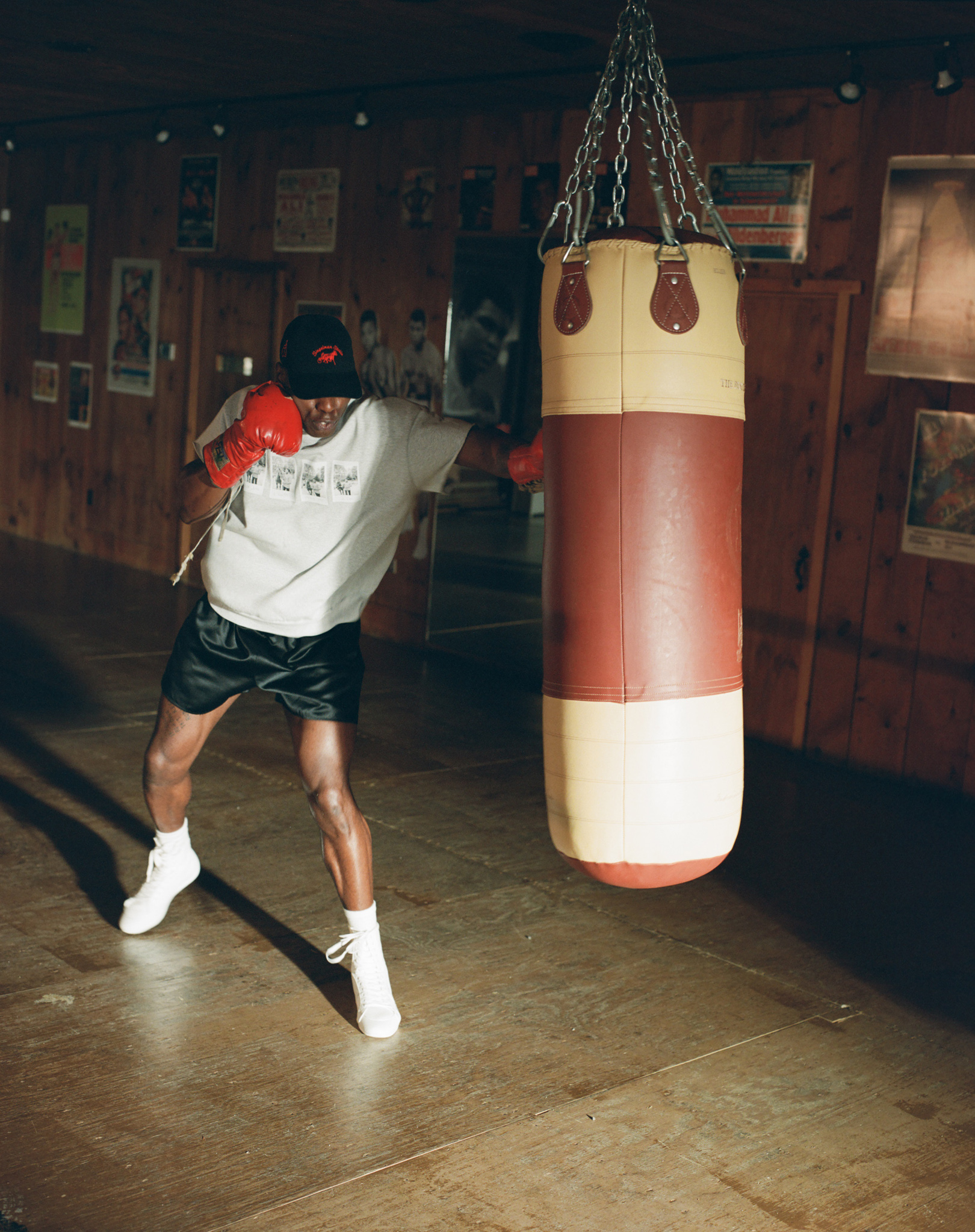
In 1979, Ali raced a harness horse in a non-betting race at Maywood Park in Melrose Park to benefit Chicago’s Provident Hospital, the first Black-owned-and-operated hospital in US history. Yes, the three-time heavyweight champion of the world won the race (as reported by The New York Times).
Ali grew up in Louisville, Kentucky, not far from Churchill Downs. The Ali x Siegelman Stable collection purposefully arrived one week before this year’s May 6 running of the Kentucky Derby, and a portion of proceeds will benefit equine therapy — but Ali’s relationship with horses was not a competitive one. For Ali, horses presented a conduit back to his humanity.
In 1963, Ali was spotted running alongside Queen Elizabeth II’s horse carriage in London. His hood was up, but that didn’t deter people from recognizing him. Ali returned to boxing in 1970 after he’d been banished from the sport for three years due to his stand against fighting in the Vietnam War, and the public eye was (somehow) more intensely trained on him. And so, in 1972, he built “Fighter’s Heaven” near Deer Lake, Pennsylvania, where he trained until his last boxing match in 1981.
Ali discovered the six-acre property through Bernie Pollack, a boxing fan who owned Pollack’s Mink Farm three miles down the road. Ali trained at an outdoor boxing ring at Pollack’s. He hated the unpredictability of the weather threatening his regimen, but he loved the tranquility in nature and the ability to jog the backroads without detection.
“Bernie brought him up to where ‘Fighter’s Heaven’ is now,” relays Mick Stefanek, the “Fighter’s Heaven” general manager since August 2017. “He wasn’t at his best. He had his license suspended, and then he lost to Joe Frazier [in 1971], his first career loss. He wanted somewhere he could get back to basics. There was nothing built here.”
Except for a barnstable.
“The story I’ve heard most often is he took a liking to the horses that were here through the Pollack family,” Stefanek adds.
Ali kept the barnstable and built his boxing gym nearby. When Ali had to be on, he was on — as clever as he was confident, boisterous as he was unbeatable — but when he was at “Fighter’s Heaven,” he could be.
Stefanek notes that it’s “an eye-opener” for most people who tour “Fighter’s Heaven” to see a photo of Ali riding a horse —like the horse photographed next to him on the Siegelman Stable sweatshirt — hanging by his boxing ring. If it wasn’t important to Ali for his cabin to have running water or electricity in the early years, why was it important to have horses?
The Siegelman Stable crew visited in mid-March to film this collection’s campaign, and they understood why Ali benefitted from having horses nearby. The magic in the air was infectious, and Max could only imagine what the energy must have been when the cabins were filled with not just Ali’s presence, but everyone else who came to be around him.
“Butterflies start as caterpillars, right? Muhammad was a caterpillar. We all were caterpillars at some point, but he was able to become that butterfly,” says Thai Richards, who has modeled for Siegelman Stable since its 2020 inception.
For one day, Richards felt honored to “exude what I was able to garner from [Ali]” and “add to how transcendent he is as a figure.” Of course, Richards’ emulation of Ali wouldn’t have been complete without posing with the horses on the property.
There’s a belief that Ali’s horses knew him better than anyone, experiencing him at his most human, and being around horses symbolized a return home to Louisville, before he belonged to the world.
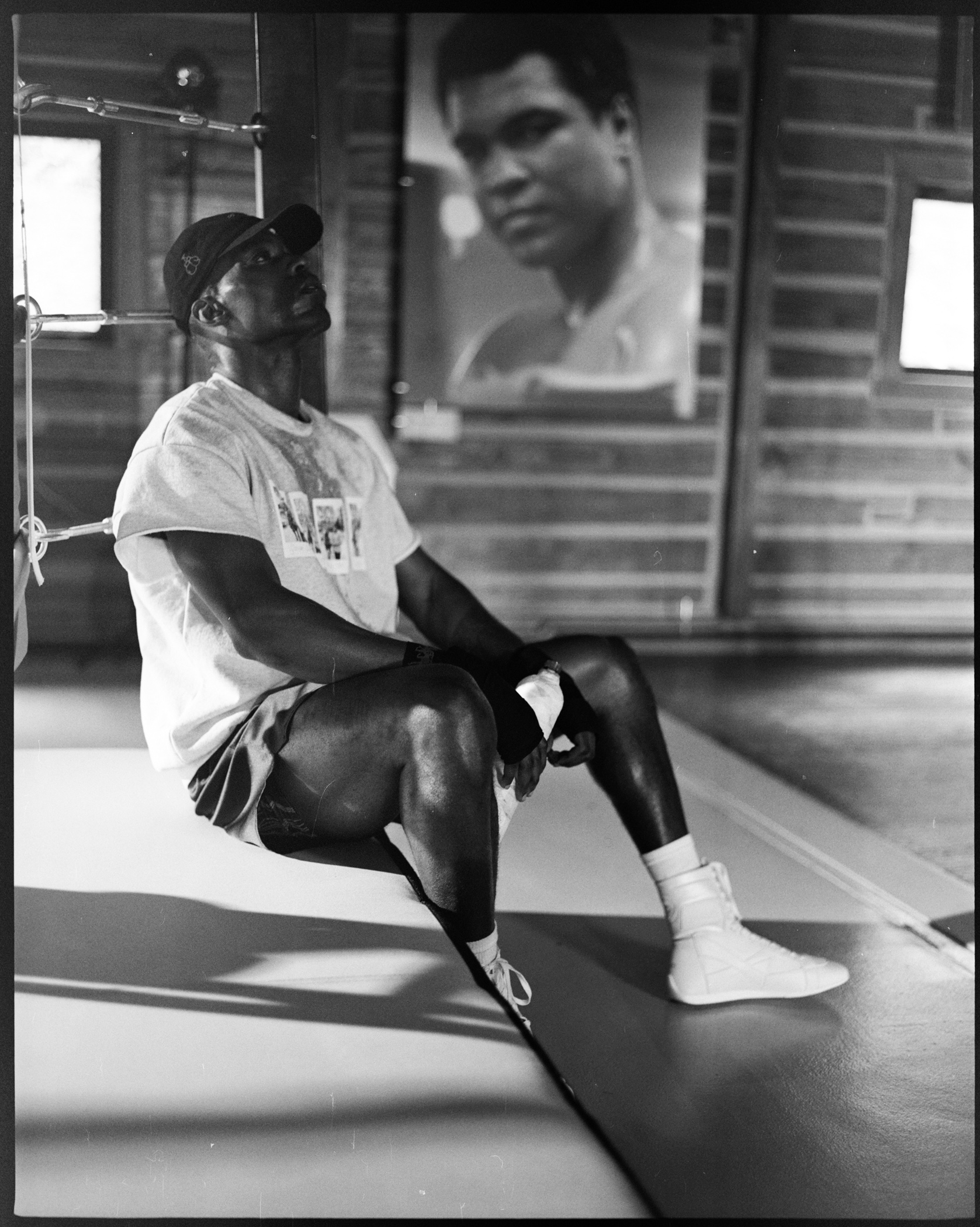
Max Siegelman spent much of his adolescence in Long Island (NY) commuting to his dad’s New Jersey stable and learning to appreciate horses as powerful athletes. Robbie Siegelman would approach Max’s soccer injuries the same way he would an injured horse. The Siegelmans treated their horses in a humane way that wasn’t always afforded to Muhammad Ali.
Siegelman and Karoline Spenning, Siegelman’s girlfriend and Siegelman Stable’s creative director, watched hours of Ali footage. There are usually missing files in the retelling of someone’s life. It’s less likely with someone as exhaustively documented as Ali, and because of how publicly he lived, an authentic campaign message was hiding in plain sight: Footage of Ali reciting a poem called “Truth.”
Spenning explains, “In the very beginning of our video, we have Muhammad Ali’s interviews where he talks about how confident he is. If you’re good with horses, you have to be confident. You have to be sure. A horse can read energy way better than humans.”
“A big piece of Siegelman Stable going forward is bringing attention to harness racing and to horses being athletes,” Siegelman adds, noting that boxing tape is in this collection because it doubles as compression tape for a horse’s legs. “Ali is talking about the truth and what that looks like and or is perceived as. Karoline’s idea was to utilize his words as showing a horse as an athlete, and the truth of that, and the truth of Muhammad Ali as an individual.”
And then, there’s the truth of Siegelman Stable.
Like “Fighter’s Heaven,” Siegelman Stable was built from scratch. Argianas drew the logo on a napkin in the 1980s so that Robbie, her husband, could found a training stable as dedicated to harness horse-racing as providing equine therapy to traumatized groups, like inner-city youth or children in hospitals.
Max moved to New York City in 2014 and was surprised to find that people unfamiliar with Siegelman Stable admired it as a fashion statement. He’d wear his grandfather’s old Siegelman Stable jacket out and about, and more and more strangers approached him to ask where they could cop one. “That’s when I started selling hats and sweatshirts,” he says. “Everybody used to say they had a family member who went to races or grew up with horses, some [tie to] horses,” he says.
The pandemic hit in 2020, and Max went in all on carrying his family’s legacy forward.
“When he told us he was going to make Siegelman Stable clothes with the logo from his dad’s stable, I was like, ‘Who is gonna wear that?’” Argianas says, laughing now because that reminds her of Max’s US history teacher in high school, Mr. Davis, telling her, “Max is going to do something where he has his finger on the pulse of American pop culture.”
“What a weird thing to say, but how true it became,” she says.
Some of today’s most influential people became loyal Siegelman Stable fans because they love that logo, starting in the NBA Bubble with Dallas Mavericks forward Tim Hardaway Jr. The brand’s A-list customer base is growing all the time, boasting the likes of Aaron Judge, Dwyane Wade, Future, Post Malone, Justin Bieber, Kendall Jenner, Kane Brown, Justin Turner, The Chainsmokers, and more. Official collaborations to this point have included the Hambletonian, San Antonio Spurs, Kygo’s Palm Tree Crew, and Johnnie Walker Blue Label.
The mounting visibility caught the eye of Barry Clarke of Authentic Brands Group, which acquired the Ali Estate in 2013, last August.
“Siegelman Stable is a luxury sportswear and streetwear brand that is capturing a young audience through purpose. Their deep connection to horses and history make them the perfect partner to bring this rarely visited aspect of Muhammad’s story to life,” says Mychal Bogee, brand director of entertainment at Authentic Brands Group.
At “Fighter’s Heaven,” the synergy was undeniable for the Siegelmans.
“You can feel how special of a place it was. There are a bunch of different cabins where his family, trainers, or other boxers lived. The boxing ring is in a cabin, and it opens to a concrete basketball court, and then 20 feet past that was a horse stable,” Max says. “He obviously surrounded himself with things that either made him happy, comfortable, or just brought him joy. It’s cool to see that horses were a part of it.”
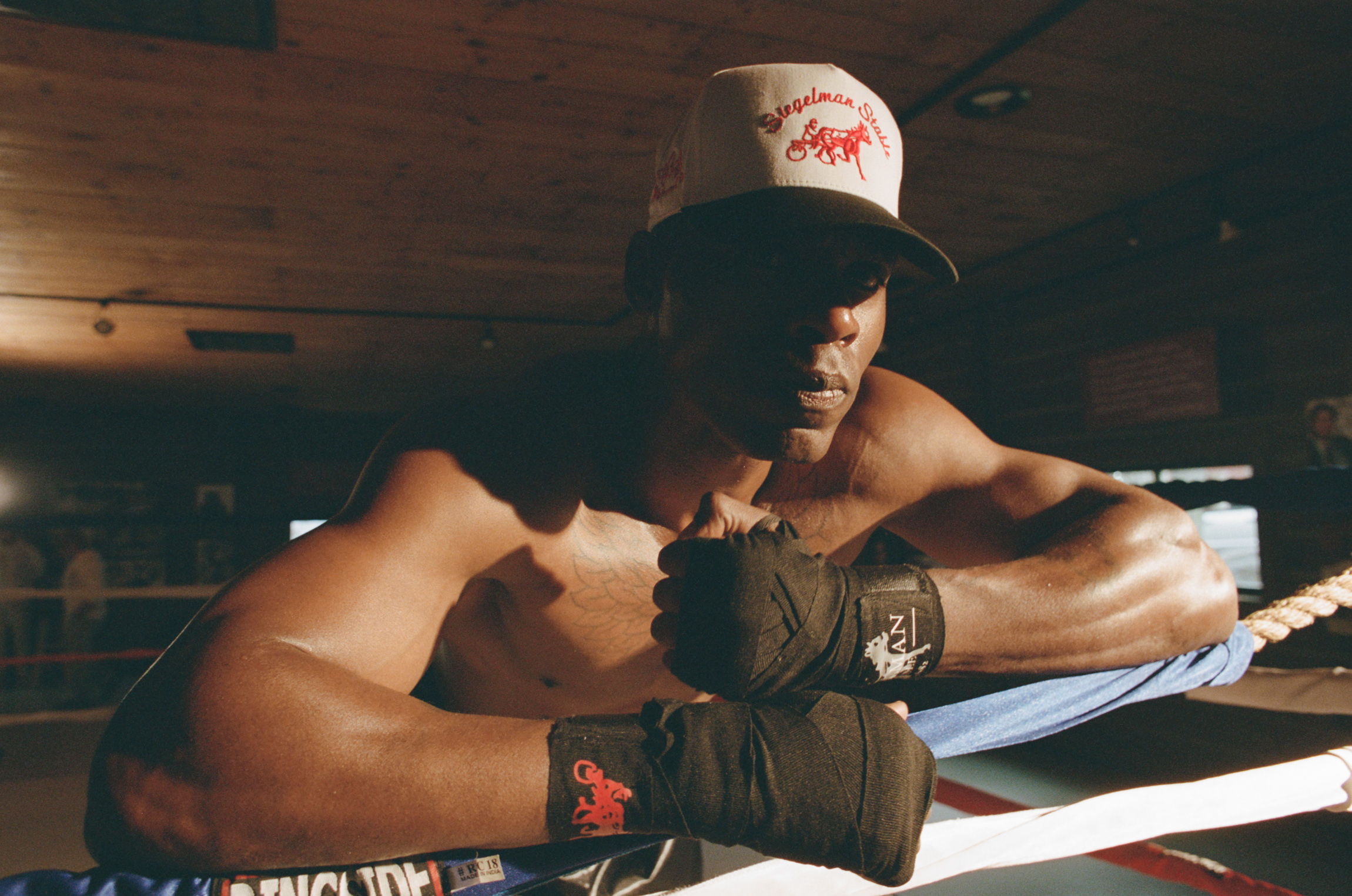
Ken Burns’ 2021 four-part docuseries, Muhammad Ali, could have opened with any number of iconic fights scenes or evoking speeches. Instead, the first scene is of Ali tricking his toddler-aged daughter into looking out the window at “a pretty horsey” so he could playfully steal a bite of her food.
It was the same genuine, imaginative Ali that Argianas watched perform magic tricks for Jesse and other children in an ABC Sports conference room.
“Horses force you to live in the moment. You forget about your past and everything that haunts you. Horses don’t care if you are rich or poor or famous; they only judge you on who you are at that moment,” Argianas says. “Anyone who met Ali felt special because, in that moment, you felt like this amazing icon, who has done so much not only for his sport, but for all humanity through charities and his fight for social justice, is focusing on you in the most inclusive way. To him, all people were important and mattered. You appreciate this as a gift.”
There was no horse outside on that day decades ago, but the thought of one delighted Ali. If he were looking through that window now, he might see a pretty horsey on a black-and-red Siegelman Stable hat, worn by someone with a new Muhammad Ali story to tell.
